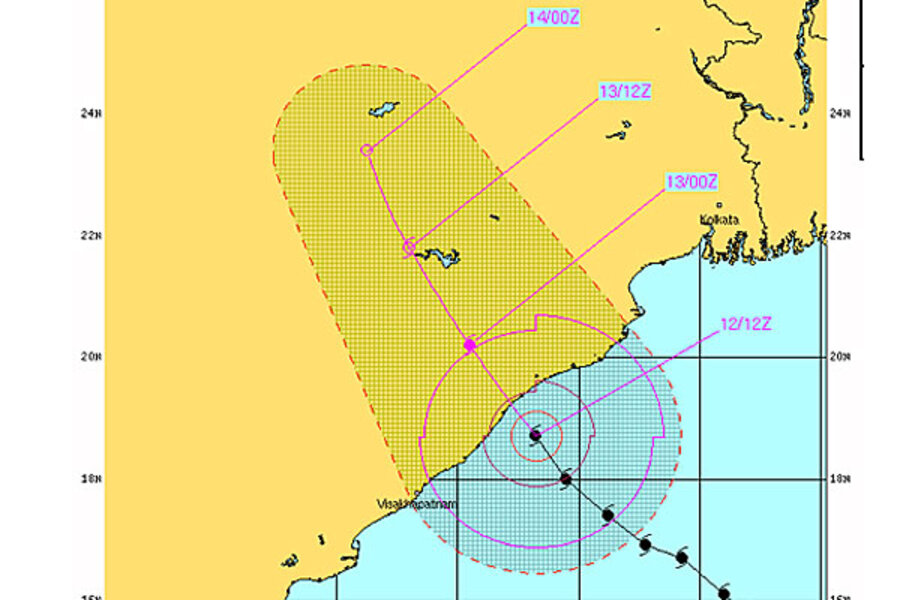Cyclone Phailin: Did India learn the lessons of 1999?
Loading...
At least half a million people were evacuated from India's eastern coast ahead of cyclone Phailin, one of the biggest storms to hit India since 1999.
As of late Saturday evening local time in India, five people had been reported killed by the storm as it lashed the coast with winds of up to 130 miles per hour. Heavy rains will bring flooding and a storm surge of 10-20 feet has been forecast. While cyclone Phailin is forecast to lose strength as it moves inland, the size of the storm suggests that its winds and rain will be felt by some 12 million people in India during the next 24-36 hours.
Power outages have already been reported in cities near the coast.
"If it's not a record, it's really, really close," University of Miami hurricane researcher Brian McNoldy told The Associated Press. "You really don't get storms stronger than this anywhere in the world ever."
To compare it with U.S. storms, McNoldy said cyclone Phailin is nearly the size of hurricane Katrina, which killed 1,200 people in 2005 and caused devastating flooding in New Orleans, but also has the wind power of 1992's hurricane Andrew, which packed 265 kph (165 mph) winds at landfall in Miami.
But in India, cyclone Phailin is being compared with "Cyclone 5B" or the "Odisha cyclone" of 1999, named after the eastern India state (formerly known as Orissa) that bore the brunt of the damage. It was the strongest storm ever recorded in the Indian Ocean. In that cyclone, some 10,000 died and 275,000 homes were destroyed by high winds, flooding, and a storm surge that reached 26 feet.
One of the lessons from 1999, say officials, is that this time more people have been evacuated from their homes along the coast.
"A lot has been learnt since 1999 and my guess is that while there could be extensive damage to property and crops, the death toll will be much less," said G. Padmanabhan, emergency analyst at the U.N. Development Programme told Reuters.
The Hindustan Times reports that "1,29,100 people from 294 villages in Srikakulam, Vizianagaram and Visakhapatnam districts have been shifted to 115 relief camps." Reuters and AP are saying at least 500,000 have been evacuated. Both are much higher than the estimated 45,000 evacuated in 1999.
This time around other preparations, such as the stocking of food and water in evacuation centers, has improved, say Indian officials. The Associated Press reported that officials in both Odisha and Andhra Pradesh have been stockpiling emergency food supplies and setting up shelters. The Indian military has put some of its forces on alert, and has trucks, transport planes and helicopters at the ready for relief operations.
In Bhubaneshwar, the Odisha state capital, government workers and volunteers were putting together hundreds of thousands of food packages for relief camps Saturday evening.
In 1999, emergency relief efforts in the region went on for more than three months after the storm and rebuilding took more than three years.






